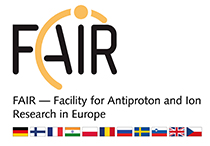In-beam validation of the HISPEC liquid H2 target
01.03.2012 |
To exploit the most exotic nuclei through low-intensity radioactive beams at fragmentation facilities, the use of a thick target is privileged to reach the necessary luminosity for in-beam gamma spectroscopy experiments.
Hydrogen-induced reactions offer a large selectivity: nuclear collectivity can be measured from (p,p’) inelastic scattering, the structure of the projectiles’ wave-function can be reliably extracted from (p,pn) and (p,2p) knockout reactions. Two-nucleon knockout is expected to be sensitive to two-body correlations within the nucleus.
A pure hydrogen target has the advantage of possessing a large number of scattering centers for a minimum energy loss in comparison with higher Z targets.
In this context, a 20-mm thick target of liquid hydrogen has been developed at CEA Saclay/IRFU [1,2]. Liquid hydrogen is contained in a thermoformed Mylar cell (see figure). The entrance (exit) window is 100 µm (250 µm) thick.
The target built at CEA Saclay will be used in GSI for PRESPEC experiments with the AGATA array [3] and for future HISPEC campaigns at FAIR. The target could be of use to the R3B collaboration for some experiments. Thicknesses from 15 to 60-mm are available.
A first test of filling the envelope with liquid hydrogen was successfully completed at GSI. It was followed by an in-beam test in May 2011. The hydrogen target was inserted inside the RISING setup [4]. For this, a 54Cr beam degraded to 130 MeV/nucleon was delivered to S4 at 400k/spill. Nucleon knockout and (p,p’) inelastic scattering were measured.
The projectile-like were identified by LYCCA [5] and the γ-rays emitted in coincidence were measured by RISING composed of 12 clusters (84 HPGe crystals) placed at forward angles. Ejectiles were identified by charge and a mass resolution of δA=1 FWHM (preliminary) has been reached. The in-beam validation has been successful. The HISPEC liquid hydrogen target is ready to be used for physics experiments at GSI.
References
[1] A. Obertelli and T. Uesaka, EPJA 47, 105 (2011).
[2] C. Louchart et al., GSI internal report (2011) ; C. Louchart et al., in preparation (2012).
[3] S. Akkoyun et al. NIMA 668 (2012) 26–58
[4] H.J. Wollersheim et al., NIMA 537, 637 (2005).
[5] LYCCA
For More Information Contact: LOUCHART Corinne, Corinne.Louchart@cea.fr


